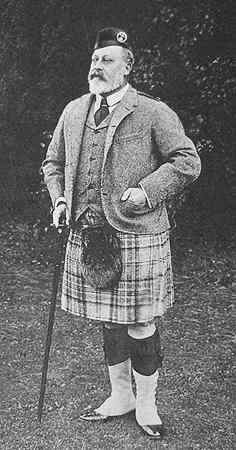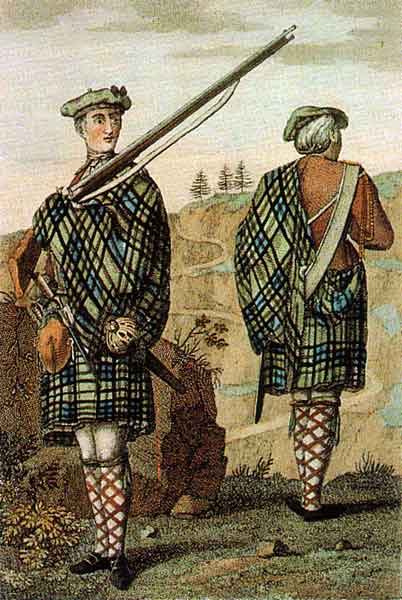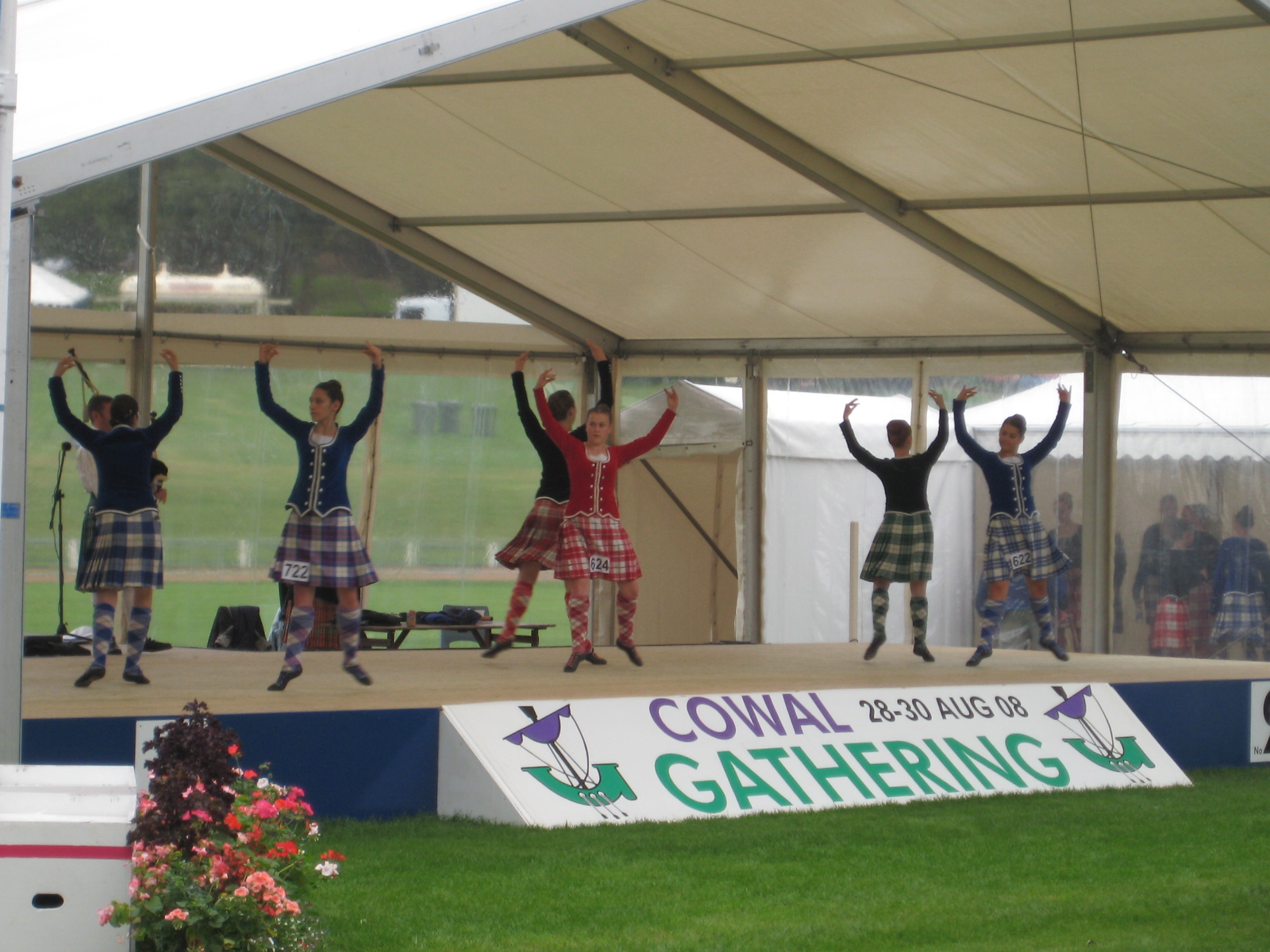 |
Kilt
A kilt ( gd, fèileadh ; Irish: ''féileadh'') is a garment resembling a wrap-around knee-length skirt, made of twill woven worsted wool with heavy pleats at the sides and back and traditionally a tartan pattern. Originating in the Scottish Highland dress for men, it is first recorded in 16th century as the great kilt, a full-length garment whose upper half could be worn as a cloak. The small kilt or ''modern kilt'' emerged in the 18th century, and is essentially the bottom half of the great kilt. Since the 19th century, it has become associated with the wider culture of Scotland, and more broadly with Gaelic or Celtic heritage. Although the kilt is most often worn by men on formal occasions and at Highland games and other sports events, it has also been adapted as an item of informal male clothing, returning to its roots as an everyday garment. Kilts are now made for casual wear in a variety of materials. Alternative fastenings may be used and pockets inserted to avoid t ... [...More Info...] [...Related Items...] OR: [Wikipedia] [Google] [Baidu] |
|
Kilt Pin
The kilt pin is a piece of jewellery that is usually worn on the lower corner of the outer apron of a kilt. Its function is to prevent the apron falling or blowing open, by adding weight to the outer apron and is commonly seen as a form of decoration.Stubborn Stag The purpose of a kilt pin. It does not pin the outer apron to the inner fabric, which is a common misconception. It is common for kilt pins to be decorative with many featuring clan symbols, national emblems or native animals and plants. Contemporary kilt pins often symbolise personal interests, favourite places or are personalised for the wearer.Islay Spalding< ... [...More Info...] [...Related Items...] OR: [Wikipedia] [Google] [Baidu] |
|
 |
Highland Dress
Highland dress is the traditional, regional dress of the Highlands and Isles of Scotland. It is often characterised by tartan (''plaid'' in North America). Specific designs of shirt, jacket, bodice and headwear may also be worn along with clan badges and other devices indicating family and heritage. Men's highland dress typically includes a kilt or trews of his clan tartan, along with either a tartan full plaid, fly plaid, or short belted plaid. There are a number of accessories, which may include but are not limited to: a belt, sporran, sgian-dubh, knee-socks with a cuff known as kilt hose, garters, kilt pins and clan badges. Women's highland dress is also based on the clan tartan, either that of her birth clan or, if married, that of her spouse's clan if she so chooses. Traditionally, women and girls do not wear kilts but may wear ankle-length tartan skirts, along with a colour-coordinated blouse and vest. A tartan earasaid, sash or tonnag (smaller shawl) may a ... [...More Info...] [...Related Items...] OR: [Wikipedia] [Google] [Baidu] |
 |
History Of The Kilt
The history of the modern kilt stretches back to at least the end of the 16th century. The kilt first appeared as the belted plaid or great kilt, a full-length garment whose upper half could be worn as a cloak draped over the shoulder, or brought up over the head as a hood. The small kilt or walking kilt (similar to the 'modern' military kilt) did not develop until the late17th or early 18th century, and is essentially the bottom half of the great kilt. The word ''kilt'' comes from the Scots word ''kilt'' meaning to tuck up the clothes around the body, although the 11th edition of the ''Encyclopædia Britannica'' (vol. 15, p. 798) says the word is Scandinavian in origin. The Scots word derives from the Old Norse ''kjalta'' (meaning ''lap'', ''fold of a gathered skirt''). The great kilt The belted plaid () or great plaid (), also known as the great kilt, is likely to have evolved over the course of the 16th century from the earlier "brat" or woollen cloak (also known as a ... [...More Info...] [...Related Items...] OR: [Wikipedia] [Google] [Baidu] |
|
Belted Plaid
The belted plaid (or a plaid worn belted) is a large blanket-like piece of fabric which is wrapped around the body with the material pleated or, more accurately, loosely gathered and secured at the waist by means of a belt. Typically, a portion of the belted plaid hangs down to about the knees (for men) or ankles (for women) with the rest of the material being wrapped up around the upper body in a variety of ways and pinned or otherwise secured to keep it in place. The belted plaid was a standard item of men's Highland dress from the late 16th century until the middle of the 18th century, It was also found in Ireland up until the early 16th century. It was also the precursor of the modern tailored kilt. Terminology The word ''plaide'' in Gaelic roughly means blanket, and that was the original term for the garment. The belted plaid has been and is often referred to by a variety of different terms, including ''féileadh-mór'', ''breacan an fhéilidh'', and very commonly, the "Gr ... [...More Info...] [...Related Items...] OR: [Wikipedia] [Google] [Baidu] |
|
 |
Tartan
Tartan ( gd, breacan ) is a patterned cloth consisting of criss-crossed, horizontal and vertical bands in multiple colours. Tartans originated in woven wool, but now they are made in other materials. Tartan is particularly associated with Scotland, as Scottish kilts almost always have tartan patterns. Tartan is made with alternating bands of coloured (pre-dyed) threads woven as both warp (weaving), warp and Warp and woof, weft at right angles to each other. The weft is woven in a simple twill, two over—two under the warp, advancing one thread at each pass. This pattern forms visible diagonal lines where different colours cross, which give the appearance of new colours blended from the original ones. The resulting blocks of colour repeat vertically and horizontally in a distinctive pattern of squares and lines known as a ''sett''. Tartan is often called "plaid" (particularly in North America), because in Scotland, a ''Full plaid, plaid'' is a large piece of tartan cloth, wor ... [...More Info...] [...Related Items...] OR: [Wikipedia] [Google] [Baidu] |
|
True Scotsman
"True Scotsman" is a humorous term used in Scotland for a man wearing a kilt without undergarments. Though the tradition originated in the military, it has entered Scottish lore as a rite, an expression of light-hearted curiosity about the custom, and even as a subversive gesture. However, in 2010, the Director of the Scottish Tartans Authority, Brian Wilton, described the tradition of not wearing undergarments as "childish and unhygienic". In response, racing driver David Coulthard and some kilt manufacturers spoke in favour of the tradition, while MSP Jamie McGrigor and Wimbledon champion Andy Murray admitted to wearing underpants under their kilts. History The earliest forms of the kilt, called a plaid or "great kilt" (feileadh mòr), were worn over the existing garments of the time, such as trews or breeches with hose or leg wraps. From the late 1600s onward, historical paintings start to show some kilts worn with high socks, with no covering on the visible part of th ... [...More Info...] [...Related Items...] OR: [Wikipedia] [Google] [Baidu] |
|
|
Thomas Rawlinson (industrialist)
Thomas Rawlinson was an 18th-century English industrialist who is widely reputed, though not without controversy, to have been the inventor of the modern kilt. Very little is easily found about Thomas Rawlinson himself, even his dates of birth and death. He is described in nearly all accounts as being an Englishman and a Quaker who went to the Highlands in the aftermath of the suppression of the 1715 Jacobite rising to establish an iron works. The origins of the modern kilt Prior to the turn of the 18th century, the form of the kilt typically worn in the Scottish Highlands was what is now known as the belted plaid or great kilt, which consisted of a large tartan or multi-coloured blanket or wrap (Gaelic ''felie'', with various spellings) which was gathered into loose pleating and drawn about the body and secured by a belt at the waist, the lower part hanging down covering the legs to about the knee. Sometime in the late 17th century or, at the latest, the early part of the 18 ... [...More Info...] [...Related Items...] OR: [Wikipedia] [Google] [Baidu] |
|
.png) |
Sporran
The sporran (; Scottish Gaelic and Irish for " purse"), a traditional part of male Scottish Highland dress, is a pouch that performs the same function as pockets on the pocketless kilt. Made of leather or fur, the ornamentation of the sporran is chosen to complement the formality of dress worn with it. The sporran is worn on a leather strap or chain, conventionally positioned in front of the groin of the wearer. Since the traditional kilt does not have pockets, the sporran serves as a wallet and container for any other necessary personal items. It is essentially a survival of the common European medieval belt-pouch, superseded elsewhere as clothing came to have pockets, but continuing in the Scottish Highlands because of the lack of these accessories in traditional dress. The sporran hangs below the belt buckle; and much effort is made to match their style and design. The kilt belt buckle may be very ornate, and contain similar motifs to the sporran cantle and the Sgian Dubh. ... [...More Info...] [...Related Items...] OR: [Wikipedia] [Google] [Baidu] |
|
Wrap (clothing)
In the context of clothing, a wrap can refer to a shawl or stole or other fabric wrapped about the upper body, or a simple skirt-type garment made by wrapping a piece of material round the lower body. Many people of all genders throughout the world wear wraps in everyday life, although in the West they are largely worn by women. They are sometimes sewn at the edges to form a tube which keeps the required size. A wrap may be secured by a corner being tucked beneath the wrapped material, by making a knot, or using ties, buttons or velcro. Types of wrap garments include: * Antriya * Adivasah * Uttariya * Veshti * Kilt * Cape, Cloak * Longyi * Mundu a garment worn in Kerala, the Tulunadu region, and Maldives. * Mathabana * Stanapatta * Obi (sash) * Sash * Palla (garment) * Pallium (Roman cloak), Toga, Himation, Chiton (costume) * Pareo — any piece of cloth wrapped around the body, worn by males or females, especially in the Cook Islands and Tahiti. * Belted plaid * Saron ... [...More Info...] [...Related Items...] OR: [Wikipedia] [Google] [Baidu] |
|
 |
Scottish Highland Dance
Highland dance or Highland dancing ( gd, dannsa Gàidhealach) is a style of competitive dancing developed in the Scottish Highlands in the 19th and 20th centuries, in the context of competitions at public events such as the Highland games. It was created from the Gaelic folk dance repertoire, but formalised with the conventions of ballet,Newton, Michael. ''A Handbook of the Scottish Gaelic World''. Four Courts Press, 2000. p.282 and has been subject to influences from outside the Highlands. Highland dancing is often performed with the accompaniment of Highland bagpipe music, and dancers wear specialised shoes called ghillies. It is now seen at nearly every modern-day Highland games event. Highland dance should not be confused with Scottish country dance, cèilidh dancing, or clog dancing, although they too may be performed at Highland games and like competitions. Basic description of Highland dancing Highland dancing is a competitive and technical dance form requiring t ... [...More Info...] [...Related Items...] OR: [Wikipedia] [Google] [Baidu] |
|
William Gordon Batoni
William is a masculine given name of Norman French origin.Hanks, Hardcastle and Hodges, ''Oxford Dictionary of First Names'', Oxford University Press, 2nd edition, , p. 276. It became very popular in the English language after the Norman conquest of England in 1066,All Things William"Meaning & Origin of the Name"/ref> and remained so throughout the Middle Ages and into the modern era. It is sometimes abbreviated "Wm." Shortened familiar versions in English include Will, Wills, Willy, Willie, Liam, Bill, and Billy. A common Irish form is Liam. Scottish diminutives include Wull, Willie or Wullie (as in Oor Wullie or the play ''Douglas''). Female forms are Willa, Willemina, Wilma and Wilhelmina. Etymology William is related to the German given name ''Wilhelm''. Both ultimately descend from Proto-Germanic ''*Wiljahelmaz'', with a direct cognate also in the Old Norse name ''Vilhjalmr'' and a West Germanic borrowing into Medieval Latin ''Willelmus''. The Proto-Germ ... [...More Info...] [...Related Items...] OR: [Wikipedia] [Google] [Baidu] |